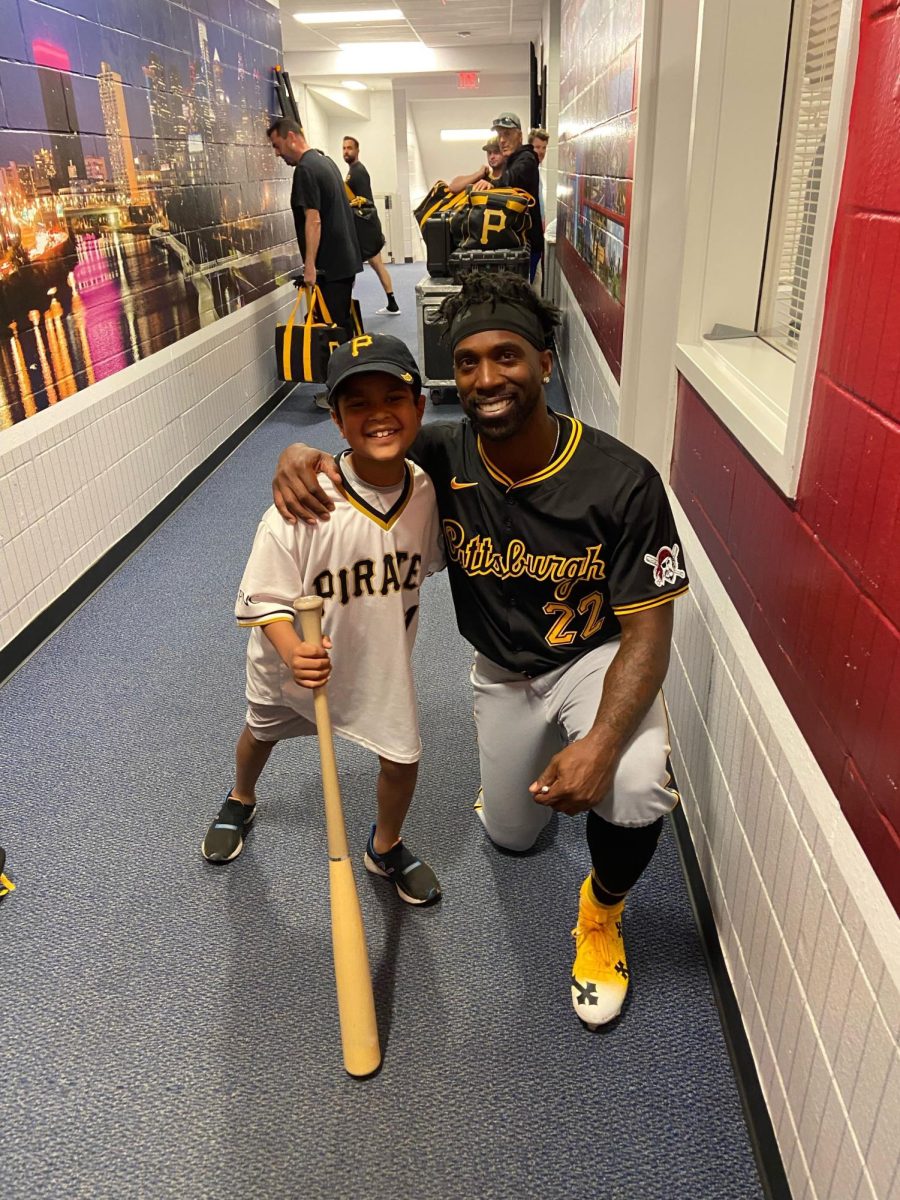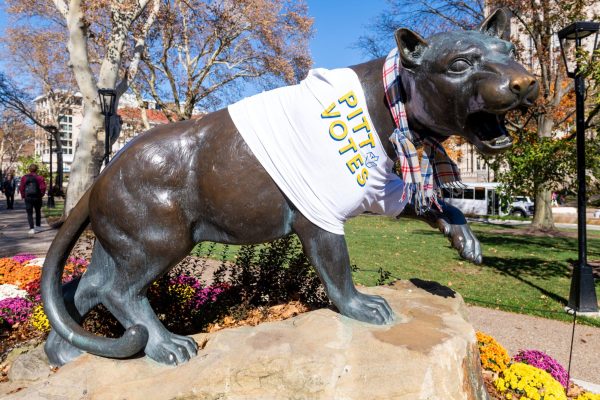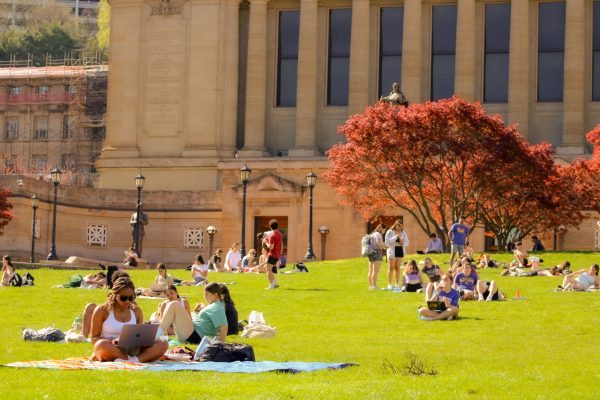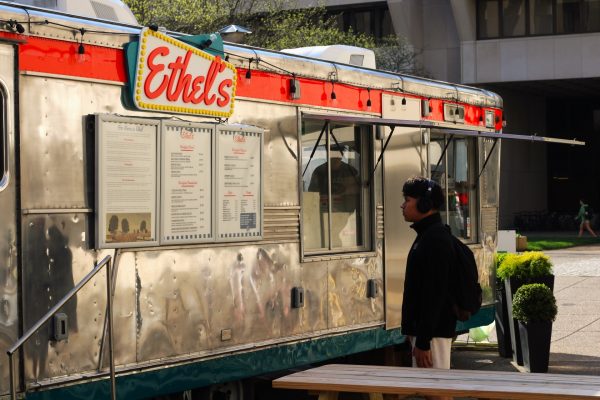Students build artistic rendition of Palestinian wall
March 28, 2012
A 9-by-12-foot wall stands in the back lot of the UnSmoke Systems Artspace, an imposing art… A 9-by-12-foot wall stands in the back lot of the UnSmoke Systems Artspace, an imposing art installation that is meant to be just that. Projectors paint videos of Palestinians onto the wall, their voices an eerie mix of passion and sorrow, reflecting the nature of the exhibition.
Titled “I Am Palestine,” this installation piece, imagined and constructed by Pitt seniors Karina Goulordova and Sean Neely, gives a fresh view on Palestinians caught in an area torn by war and violence.
“The main purpose of this piece is to show the dominance of the wall,” Goulordova said. “We hope that people, through this exhibit, will be able to see another side of Palestine.”
Goulordova first went to the Palestinian Territories two years ago as part of a journey to practice and better her Arabic. Working with a local non-governmental organization, Goulordova said she was surprised by the level of diversity that she encountered. Intrigued, she began to conduct interviews with the locals, capturing the dreams, fears and frustrations of the people she met.
“The interviews were conducted in a bunch of different languages,” she said. “We had interviews in Arabic, Spanish, Russian, Portuguese and more.”
After coming back to the states, she approached Neely with the videos she had recorded, wanting to somehow display them and share her experience of Palestine. After brainstorming, they figured that one of the most imposing signs of oppression and suffering in Palestine is “the wall.”
After the Second Intifada, or Palestinian uprising, when Palestinian militants began targeting Israeli civilians that began in 2000, the Separation Barrier was constructed, said Ph.D English/film studies candidate Colleen Jankovic, who’s working on gender and sexuality studies with a focus on cinema in Israel and Palestine.
Constructed in 2002, the barrier stretches 400 miles and is still under construction, she explained. More than just a slab of concrete, the wall is comprised of “electrified fence fortified with deep trenches, barbed wire, radar systems, surveillance cameras, watchtowers, checkpoints, an intrusion-tracking dirt road and a paved road for armed Israeli military patrols,” she explained.
According to Jankovic, there is an artistic tradition — made up mainly of graffiti — on the wall meant to “draw attention to the wall and point to its negative, chaotic and fragmentary effects, reinscribing its concrete presence with explicit and implicit messages and meanings.”
This is what Goulordova and Neely were taking on, hoping to recreate the feeling of domination and oppression that this massive barrier presents.
Since Neely had experience in woodworking through building stands for companies such as TOMS, he was left with much of the physical design process and construction.
“My challenge was describing my vision to Karina,” he said, joking that “half of my apartment became taken up as my studio.”
Neither of them had previous experience with art in the general sense of the word, but found a very helpful community at Pitt that was willing to aid them.
During the construction of their wall, Goulordova and Neely needed to find a place to exhibit this monumental piece.
“We thought about the galleries downtown,” Goulordova said. “But then we found UnSmoke Systems in Braddock, and it was perfect.”
Goulordova and Neely went on to explain that Braddock was a thriving community during the steel boom, but since the mills began to outsource, the community had fallen on tough times, with shop owners leaving in droves.
Recently it’s been on an upturn, attracting artists like Goulordova and Neely.
Goulordova and Neely were in charge of all aspects of setting up their exhibit. They placed the exhibit in the back lot outside the Unsmoke gallery and curate their own work.
Contemporary art Ph.D candidate Cristina Alba said that “there is no recipe when it comes to the process of creating installation art. It can be an individual process, or it can imply a group of producers or the involvement of a community of people.”
This epitomizes the creative process of Goulordova and Neely, whose journey of conceptualization to formulation was reflected in the excitement of the opening day of the exhibit.
Opening day was on Saturday, March 24, and shared its debut alongside another exhibit, SNAPSHOT. People milled around the exhibits, exemplifying a hidden arts community brought to life. Laughter filled the air along with the scent of freshly baked pizza and the damp odor of a rainy day’s.
The “I Am Palestine” exhibit made its home in the back lot of the art space, a simple but daunting construction of wooden planks. But the piece’s simplicity allowed it to be more than just a wall of wood, with the video projection and visitor interaction making it a living entity. People were encouraged to paint messages on its surface, creating an unspoken solidarity and connection to the art.
Meanwhile, Goulordova and Neely milled around, talking to visitors, answering questions and enjoying the vibrant atmosphere, their faces lit in permanent and genuine smiles, basking in the glow of their work.







